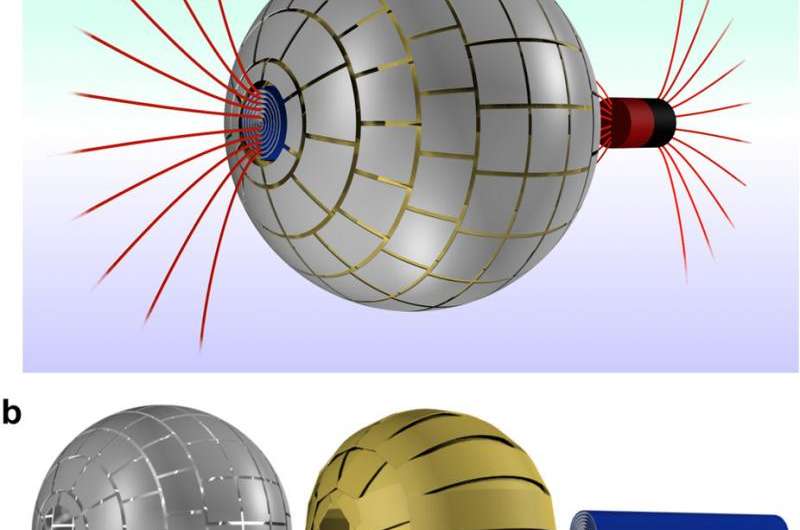August 24, 2015 report
Best of Last Week – New way to detect dark matter, a magnetic wormhole and staring found to cause hallucinations

(Phys.org)—It was another good week for physics as Ian Shoemaker, until recently with the University of Southern Denmark, proposed a new theory, suggesting that if we want to detect dark matter, we might need a different approach—he believes that scientists should be looking for dark radiation signals that theoretically result from dark matter collisions. Also, another trio created an artificial magnetic wormhole—a three-layered sphere that makes it appears as if a magnetic field has suddenly disappeared and then reappeared somewhere else.
In other news, a team of researchers in Rome and Geneva found a way to create tiny gears that increase light-to-work conversion efficiency by five orders of magnitude—by shining an LED light on tiny pinwheel-shaped gears floating on a liquid surface. Also, an international team of researchers came up with a way to fabricate hexagonal silicon, potentially leading to light-emitting semiconductors. They believe it could lead to new kinds of optical, electrical and superconducting materials. And another team at Cornell University reported on their efforts to explore the origins of energy in chemical reactions using experimental quantum chemistry.
In unrelated news, a team of paleobotanists reported that they had identified what could be the mythical "first flower"—Montsechia vidalii, a plant that once grew abundantly in the Pyrenees and in the Iberian Range. Also, another team working at the Schoeneck-Kilianstaedten dig site in Germany reported that they had found evidence of a prehistoric massacre in Europe.
In the interesting developments file, a team of researchers at the University of Texas Medical Branch at Galveston reported that they had developed a drug—a regenerative peptide—that protects against the deadly effects of nuclear radiation 24 hours after exposure. And there were reports, of course, of the Ashley Madison "cheater" files hitting the dark web—the hacker group made good on its promise to release data stolen from the site that specializes in providing a way for people to cheat on their partners.
And finally, if you have ever found things getting weird when gazing into the eyes of a loved one for very long, you might have a lot of company, as a team of researchers has found that staring into someone's eyes for a long time can cause hallucinations. Apparently, it happens to most people.
Journal information: Scientific Reports
© 2015 Phys.org





















